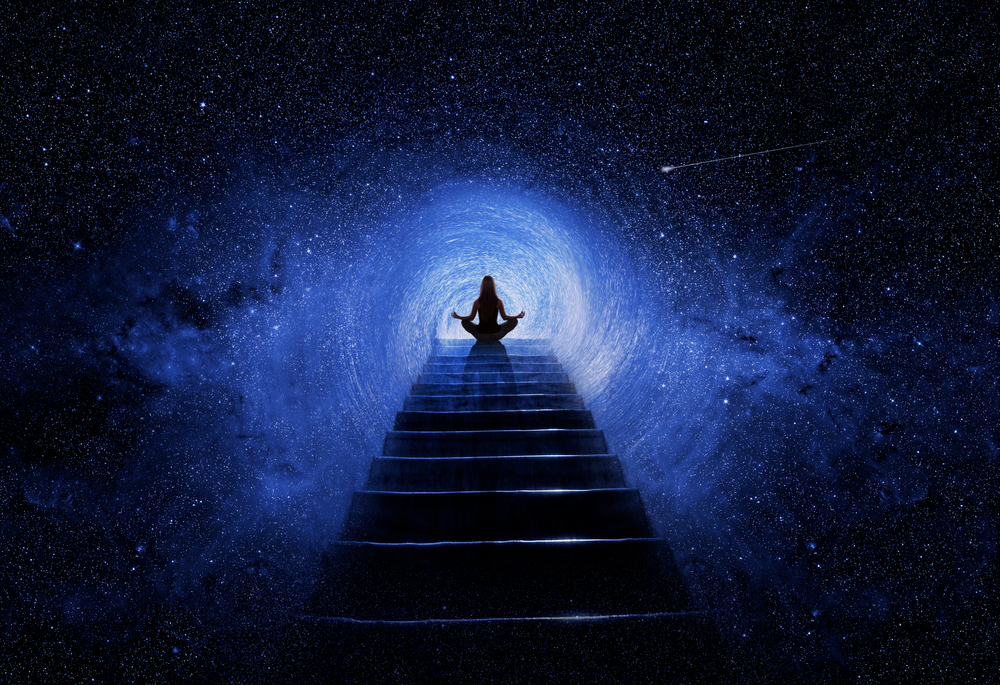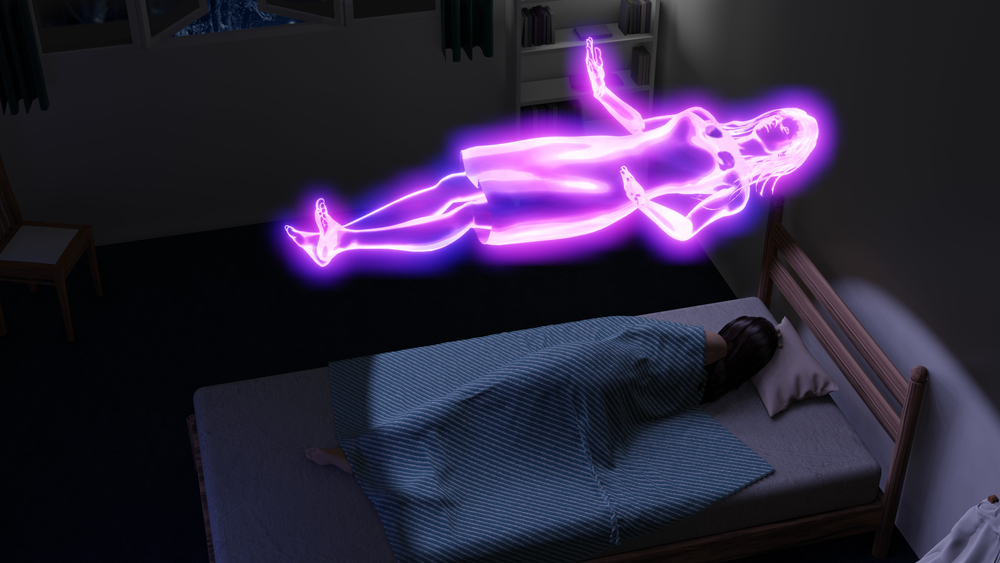You Have an Invisible Light That Vanishes When You Die, Science Confirms

What if every heartbeat was sending out a flicker of light? Not the kind you can see with your eyes, but a glow so faint it hides beneath the noise of the world. For centuries, mystics have spoken of an “aura,” poets have called it an “inner flame,” and elders across cultures have described life as a spark destined to fade. Now, modern science tells us they weren’t entirely wrong.
Researchers have discovered that every living being humans, animals, even plants emits a whisper of light. Not metaphorical light, but actual photons, the smallest particles of visible brightness. It’s unimaginably weak, billions of times dimmer than a light bulb, yet constant. And here’s the haunting part: the moment life ends, that glow vanishes.
Think about that. Each of us is walking around carrying a secret radiance, invisible yet real, a reminder that being alive is more than breath and pulse. It is illumination. And when our time comes, our glow the very chemistry of our existence dims into darkness.
This is not superstition. It is biology. It is physics. And it is also something more: a revelation about what it means to be alive.
The Science of Our Invisible Glow
Every living cell in your body is like a tiny power plant, constantly at work to keep you alive. Deep inside, in structures called mitochondria, sugars and oxygen are combined in a process known as oxidative metabolism. This is how your body produces energy for every heartbeat, every thought, every movement. But like any engine, there are byproducts and one of those byproducts is light.
This faint light is known as ultraweak photon emission (UPE), sometimes called biophoton emission. It happens when unstable molecules called reactive oxygen species (ROS) form during metabolism. These molecules can jolt electrons inside nearby atoms. When those electrons calm back down, they release a tiny flash of light a photon. Multiply that across trillions of cells, and your body is quietly shimmering all the time.

The glow is unimaginably subtle. Scientists estimate that a human emits somewhere between 10 to 1,000 photons per square centimeter per second. To put that in perspective, a single light bulb emits billions of billions of photons in that same span. That’s why your eyes can’t see it. To capture it, researchers use ultra-sensitive cameras in total darkness devices capable of detecting single photons in the ultraviolet to near-infrared range.
For decades, the existence of this glow was debated. Was it real, or just some measurement error? But now the evidence is undeniable. Teams at the University of Calgary and Canada’s National Research Council have shown that this light is universal it comes from all living organisms, from plants to mice to humans. And most importantly, it is a signal of life itself: when metabolism stops, so does the glow.
This isn’t mysticism, nor an aura. It’s biochemistry, written in photons. A hidden shimmer that science has finally brought into view.
Watching Life’s Glow Fade

To truly see the invisible, scientists had to create the perfect darkness. In light-sealed chambers, researchers placed living mice and used cameras so sensitive they could capture single photons. For an hour, the animals’ bodies emitted a faint but steady shimmer, with hotspots glowing more brightly around the skin, organs, and paws. Then, the mice were humanely euthanized, their bodies kept at the same temperature to rule out body heat. The imaging continued.
What unfolded was striking. Within just thirty minutes, the once-steady glow began to dim. Bright regions faded into patches, and then into almost nothing at all. Only faint traces lingered over certain organs, like the liver, before vanishing completely. Scientists confirmed that this was not warmth leaving the body infrared radiation produces a different signal altogether. This was light, a direct byproduct of cellular activity, extinguished when metabolism ceased.
Plants revealed a similar story. Leaves from thale cress and umbrella trees glowed faintly when healthy, but when cut, their injured tissues flared with brighter bursts of photons. Stress, whether from injury or exposure to chemicals like benzocaine, made the glow more intense an echo of the plant’s survival mechanisms. Yet as the cells died, the light faded away, just as it did in animals.
The pattern was unmistakable: as long as life continues, the body glows. When life ends, the light disappears. It was a rare glimpse into the process of dying, captured not in poetry but in photons a quiet vanishing that marks the threshold between being and not being.
Why This Discovery Matters to Science

The idea that living beings emit light may sound like a curious side note, but scientists believe it could transform the way we understand health, disease, and even life itself. Because ultraweak photon emission (UPE) is directly tied to metabolism and cellular stress, it may become a powerful, non-invasive tool for medicine, agriculture, and neuroscience.
In medicine, UPE could one day serve as an early-warning system. When cells are under stress whether from inflammation, infection, or cancer they release more reactive oxygen species, producing stronger photon emissions. By measuring these subtle shifts, doctors might be able to detect illness before symptoms even appear. Researchers suggest it could help monitor conditions linked to oxidative stress, such as Alzheimer’s disease or certain cancers. It may also prove useful in organ transplants, helping surgeons assess whether tissues are truly “alive” before surgery.
The applications don’t stop with humans. In agriculture, plants under drought, pests, or chemical stress emit brighter photon signals. By detecting these early, farmers could respond before visible damage occurs, protecting crops and improving yields. Some experts even imagine drones flying over fields at night, scanning plant health by measuring photon emissions across entire farms.
Even the brain the most energy-hungry organ in the body offers fascinating possibilities. Because neurons generate large amounts of reactive oxygen species, some scientists speculate that UPE could reveal new insights into brain function, stress, and possibly even consciousness itself. While this remains speculative, the idea that our thoughts might leave faint trails of light is both scientifically intriguing and deeply poetic.
Echoes of Ancient Wisdom

Long before photon-sensitive cameras revealed our invisible glow, cultures across the world spoke of a hidden radiance within living beings. Poets called it the spark of life. Mystics described it as an aura. Ancient scriptures often compared the human soul to a flame or a light shining in darkness. Though science does not set out to confirm spiritual beliefs, the parallels are difficult to ignore.
In Buddhist teachings, enlightenment is symbolized as light breaking through shadow, a reminder that clarity and awakening carry their own radiance. Christian mystics wrote of the “divine spark” residing within each soul, a glimmer of God’s presence that shines until death. Indigenous traditions from many parts of the world have spoken of a luminous energy connecting each person to the Earth and sky. Though these traditions differ in language, they converge on one truth: life carries light, and death marks its fading.
Now, modern biology provides its own perspective. Researchers emphasize that ultraweak photon emission is not a mystical aura, but a byproduct of metabolism an outcome of oxygen, molecules, and energy exchange at the cellular level. Yet the fact remains: when we live, we shine, and when life ends, that shimmer vanishes.
Perhaps the deeper lesson is not whether science “proves” spirituality, but that both speak to the same mystery from different directions. Where tradition uses metaphor and meaning, science uses molecules and measurements. Together, they paint a fuller picture: that being alive is radiant in both a physical and symbolic sense.
This convergence is more than coincidence it is a reminder that modern discoveries often echo ancient intuitions, and that the language of light has always been humanity’s way of describing the miracle of being alive.
What This Means for Us as Human Beings

To know that we literally shine even if invisibly is both humbling and empowering. The discovery of ultraweak photon emission isn’t just a scientific curiosity; it is a mirror held up to our existence. It reminds us that life is not silent machinery but a radiant process, a constant flicker of energy that vanishes the moment we stop breathing.
This glow is more than a laboratory finding. It invites us to ask: How are we tending to our light? Stress, illness, and damage make the glow flare unpredictably, while balance and health sustain it. In this way, the science offers a metaphor we can live by: the choices we make what we eat, how we rest, the way we handle stress affect not only how we feel but how brightly we burn at the most fundamental level.
It also challenges us to see ourselves, and others, differently. If every person we meet is quietly glowing, then every interaction is an exchange of light, however subtle. That perspective changes the way we think about kindness, connection, and legacy. We are not only bodies moving through space; we are luminous beings, carrying a fragile shimmer that makes us alive.
Perhaps the most striking truth is that the glow is temporary. It does not linger once metabolism ceases. And that reality gives weight to our time here. To live as if our light is finite is to live with intention—to shine in the ways that matter most, through our actions, our creativity, our love, and the impact we leave on others.
Living as if You Shine
Every discovery in science carries with it both data and meaning. The data tells us this: every living being emits a delicate, invisible glow, and when life ends, that glow fades to nothing. The meaning is up to us.
We are not just consumers of air and food, not just bodies made of flesh and bone. We are radiant literally. Our light is a quiet testament to the chemistry of being alive, and perhaps also a metaphor for the legacy we leave behind. While we live, we shine. While we breathe, our very cells whisper photons into the darkness.
The real question is not whether we glow, but how we choose to use that time of shining. Will we live passively, allowing our light to dim unnoticed? Or will we burn with intention choosing kindness, creating beauty, lifting others, and leaving the world better than we found it?
The glow within us may vanish at death, but its echoes can outlast us in memories, in actions, in the lives we touch. If science has shown us anything, it’s this: our time to shine is now.
Loading...

